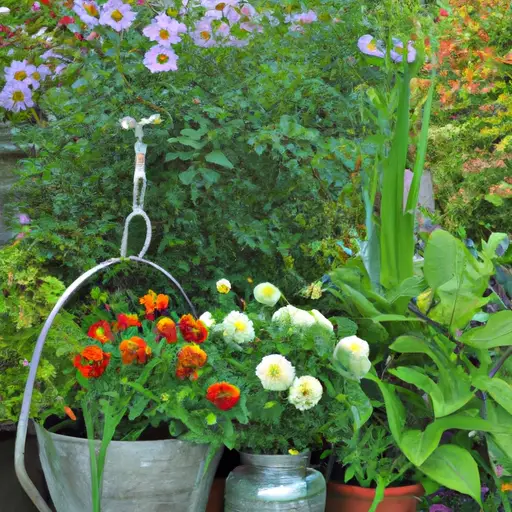Container Gardening 101: How to Get Started and Enjoy the Process
Container gardening is a wonderful way to bring greenery and beauty into your life, regardless of whether you live in a spacious house with a garden or a small apartment with limited outdoor space. It offers countless possibilities for growing your favorite plants and vegetables, even in the smallest of spaces. If you’re new to container gardening, fear not! This beginner’s guide will help you get started and enjoy the fulfilling process of cultivating your own mini garden.
1. Assess Your Space: Take a good look at the available space you have for container gardening. Whether it’s a balcony, patio, or windowsill, evaluate how much sunlight it receives throughout the day. Most plants require at least six hours of direct sunlight daily, so choose plants accordingly based on their sun requirements.
2. Select Suitable Containers: Choose containers that suit both your aesthetic taste and the needs of the plants you wish to grow. Ensure they have proper drainage holes at the bottom to prevent waterlogging and root rot. You can opt for traditional terracotta pots, hanging baskets, or repurpose items like buckets or old wooden crates as long as they can hold soil and water.
3. Pick Quality Potting Mix: Invest in high-quality potting mix that provides good drainage while retaining moisture. Avoid using garden soil alone as it becomes compacted in containers and limits necessary airflow. A pre-mixed potting soil blend enriched with organic matter is ideal for container gardening success.
4. Choose Plants Wisely: Selecting suitable plants is crucial for successful container gardening. Consider factors like size, growth habit, sunlight requirements, and how well they adapt to container living. Herbs like basil, mint, or parsley; flowering plants like petunia or marigold; and small vegetables like cherry tomatoes or lettuces are excellent choices for beginners.
5. Water Regularly: Containers tend to dry out more quickly than in-ground gardens, so consistent watering is essential. Keep the soil moist, but be cautious of overwatering, which can lead to root rot. Check the moisture level by sticking your finger an inch into the soil – if it feels dry, it’s time to water.
6. Fertilize: Container plants require regular feeding since nutrients leach out every time you water. Apply a slow-release fertilizer or use organic liquid fertilizers once every few weeks to help plants thrive.
7. Prune and Deadhead: Regularly prune your container plants by removing spent flowers or leggy growth to promote bushier and healthier growth. This also helps prevent pests and diseases from taking hold.
8. Protect Against Pests: Container gardens are not immune to pests and diseases, so keep an eye out for any signs of trouble. Inspect plants regularly for pests like aphids or spider mites and take appropriate measures such as using organic insecticidal soap or neem oil if necessary.
9. Rotate and Reposition: To ensure all parts of your plant receive sufficient sunlight, rotate your containers occasionally. This prevents plants from leaning towards the light source and encourages balanced growth.
10. Enjoy the Process: Finally, container gardening should be a joyful experience! Experiment with different plant combinations, colors, textures, and scents that bring you joy. Take time to appreciate the beauty of nature flourishing right at your doorstep.
Container gardening is a rewarding hobby that offers endless possibilities for creative expression while reconnecting with nature. By following these basic steps and adapting them to your unique space and preferences, you can create a beautiful garden sanctuary that brings joy and tranquility into your life while enjoying the process every step of the way!














